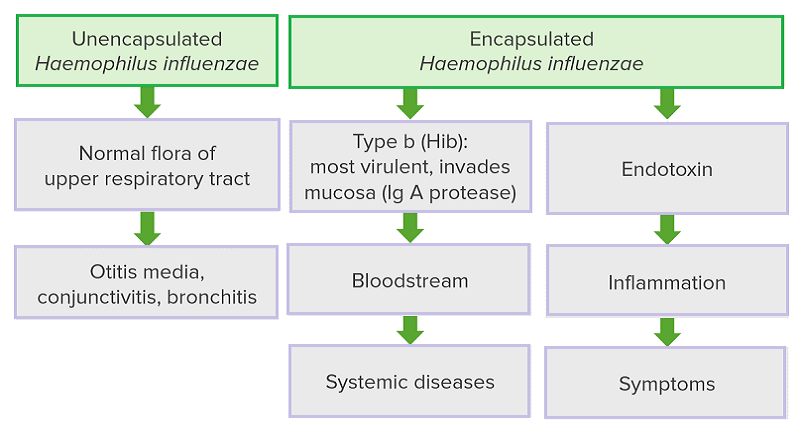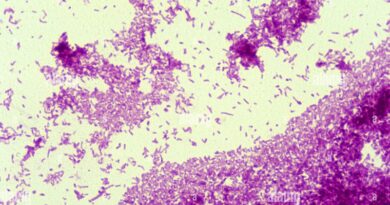Haemophilus Influenzae and its Impact on Human Health
In the vast realm of infectious diseases, Haemophilus influenzae has a significant place with a significant impact on human health. Despite its name, this bacterium is not associated with the influenza virus, but it is responsible for a range of illnesses, from mild respiratory infections to life-threatening conditions. In this article, we will explore the world of Haemophilus influenzae, its characteristics, diseases it causes, prevention, and treatment options.
Haemophilus influenzae: The Basics
Haemophilus influenzae is a Gram-negative bacterium commonly found in the upper respiratory tract of humans. Understanding the taxonomy, morphology, and variants of Haemophilus influenzae is important for studying its pathogenicity and developing appropriate preventive measures.
A. Morphology and Structure: It is pleomorphic, lacks flagella, and has an outer membrane containing lipopolysaccharides and adhesins.
B. Taxonomy and Classification: The bacterium can be classified into encapsulated (typeable) strains with polysaccharide capsules and non-encapsulated (non-typeable) strains. Encapsulated strains are further categorized into serotypes based on their capsule composition. Haemophilus influenzae type b (Hib), an encapsulated strain, was a significant cause of invasive diseases in children before the introduction of the Hib vaccine.
The Diseases Caused by Haemophilus influenzae
Haemophilus influenzae is associated with a range of diseases, varying in severity from mild respiratory infections to life-threatening invasive conditions. In this article, we will explore the diseases caused by Haemophilus influenzae and their impact on human health.
1. Respiratory Tract Infections
This bacterium is a common pathogen responsible for respiratory tract infections, particularly in children and individuals with compromised immune systems. These infections include:
- Otitis Media:
Haemophilus is one of the leading causes of bacterial otitis media, an infection of the middle ear that often occurs in children. - Sinusitis
- Bronchitis
2. Invasive Haemophilus influenzae Disease
In some cases, Haemophilus influenzae can invade deeper into the body, leading to more severe and invasive diseases. The most notable invasive disease caused by Haemophilus influenzae is:
- Meningitis:
Haemophilus influenzae type b (Hib) was once a significant cause of bacterial meningitis in children. However, widespread vaccination against Hib has drastically reduced the incidence of Hib-related meningitis. - Pneumonia:
Haemophilus influenzae pneumonia is typically seen in individuals with underlying respiratory conditions or compromised immune systems. - Epiglottitis:
This is a rare but serious infection that causes inflammation and swelling of the epiglottis, a small flap of tissue that covers the windpipe. It can lead to breathing difficulties and is considered a medical emergency. - Septicemia:
It can enter the bloodstream and cause a severe bloodstream infection known as septicemia, which can be life-threatening if left untreated.
Haemophilus influenzae Transmission
A. Person-to-Person Spread
B. Airborne Transmission
Diagnosis
Various diagnostic methods and tests are utilized to identify the presence of Haemophilus influenzae and determine the specific strain, including:
1. Microbiological Testing
Microbiological testing plays a vital role in confirming the presence of Haemophilus influenzae and determining the causative strain. The following tests are commonly employed:
- Gram Stain: A Gram stain of specimens, (respiratory secretions, cerebrospinal fluid (CSF), or blood), can show the presence of Gram-negative coccobacilli bacteria. This staining technique helps in visualizing bacterial morphology.
- Culture: Culturing on specific agar media is essential for confirming the presence of the bacterium. Blood agar supplemented with factors such as X and V (XV) is commonly used. Haemophilus influenzae grows as small, round colonies on the agar.
- Biochemical Tests: Various biochemical tests are performed on the isolated colonies to differentiate Haemophilus influenzae from other bacteria. These tests evaluate the bacterium’s ability to metabolize specific substrates and produce characteristic enzymatic reactions.
- Serotyping: In cases where the strain’s serotype is of interest, serological tests can be performed. These tests identify the specific capsular polysaccharides present on the surface of Haemophilus influenzae. Serotyping helps determine whether the strain is encapsulated (typeable) or non-encapsulated (non-typeable).
2. Molecular Testing
Molecular techniques are increasingly utilized for the rapid and precise identification of Haemophilus influenzae strains. These methods include:
- Polymerase Chain Reaction (PCR): PCR allows for the detection of specific DNA sequences unique to Haemophilus influenzae. This technique provides a rapid and sensitive means of confirming the presence of the bacterium in clinical samples.
- Sequencing: DNA sequencing can be employed to analyze specific genes or regions of the Haemophilus influenzae genome. It helps in determining the strain’s genetic characteristics, including virulence factors and antimicrobial resistance patterns.
Prevention and Control
A. Vaccination: The H. influenzae Type b (Hib) Vaccine
B. Antibiotic Prophylaxis
C. Good Hygiene Practices
Treatment Options and Challenges
A. Antibiotics and Drug Resistance
B. Emerging Therapies
C. Supportive Care
The Global Impact of Haemophilus influenzae
Haemophilus influenzae, particularly Hib, has had a significant global impact, causing diseases such as meningitis, pneumonia, and otitis media. However, the introduction of the Hib vaccine has played a pivotal role in reducing the burden of Hib-related infections. Ongoing surveillance, monitoring, and antimicrobial stewardship efforts are necessary to address the challenges associated with Haemophilus influenzae, including emerging antimicrobial resistance. By continuing to focus on prevention, treatment, and research, we can further minimize the global impact of these bacteria and protect the health and well-being of individuals worldwide.
Summary:
Haemophilus influenzae is a bacterium that poses a significant impact on human health. It’s able to cause a range of infections, from mild to severe, therefore it’s important to understand its biology, transmission, and prevention measures. Through the implementation of vaccination programs and advancements in treatment, we can control the burden of Haemophilus influenzae-related diseases. By continuing to explore its mysteries, we pave the way for a healthier future, free from the clutches of this formidable bacterium.
In this article, we explored the world of Haemophilus influenzae and unveiled its characteristics, diseases caused, prevention measures, and treatment options. If you suspect that you may have symptoms, Helalmedical can help, offering quick, private, and convenient testing options. You may contact us here: Facebook page.




